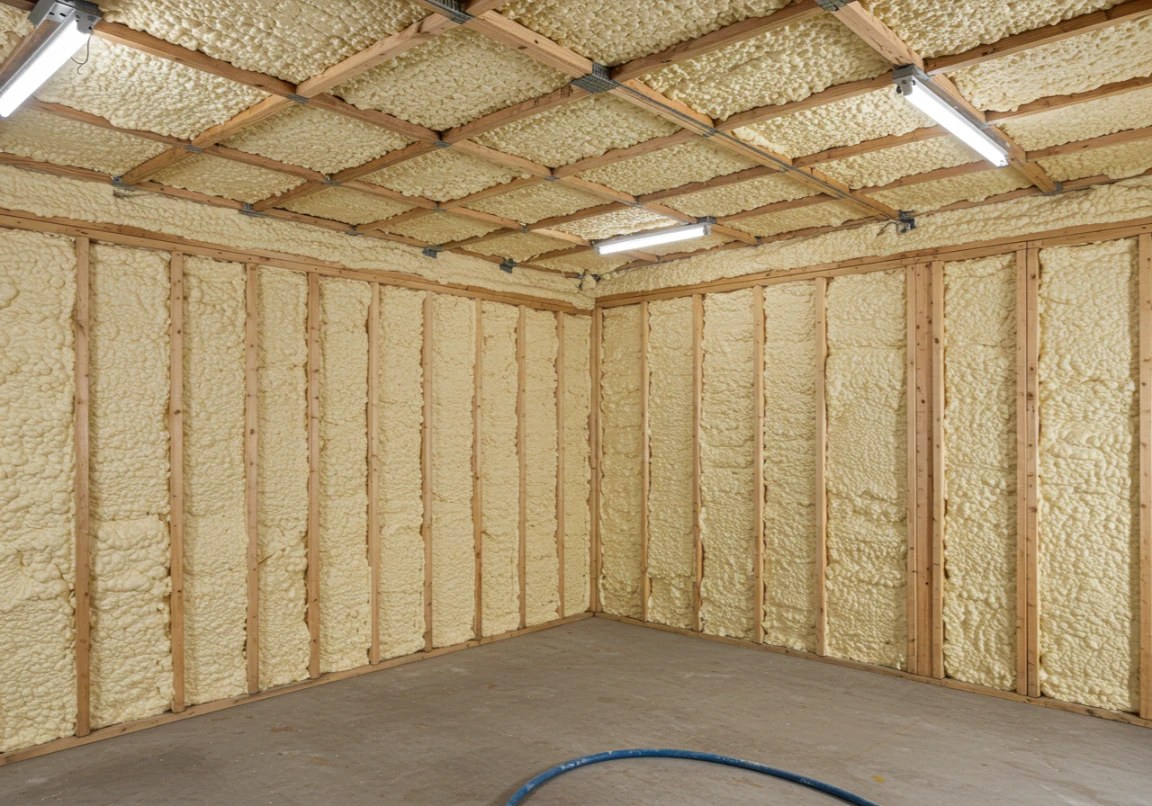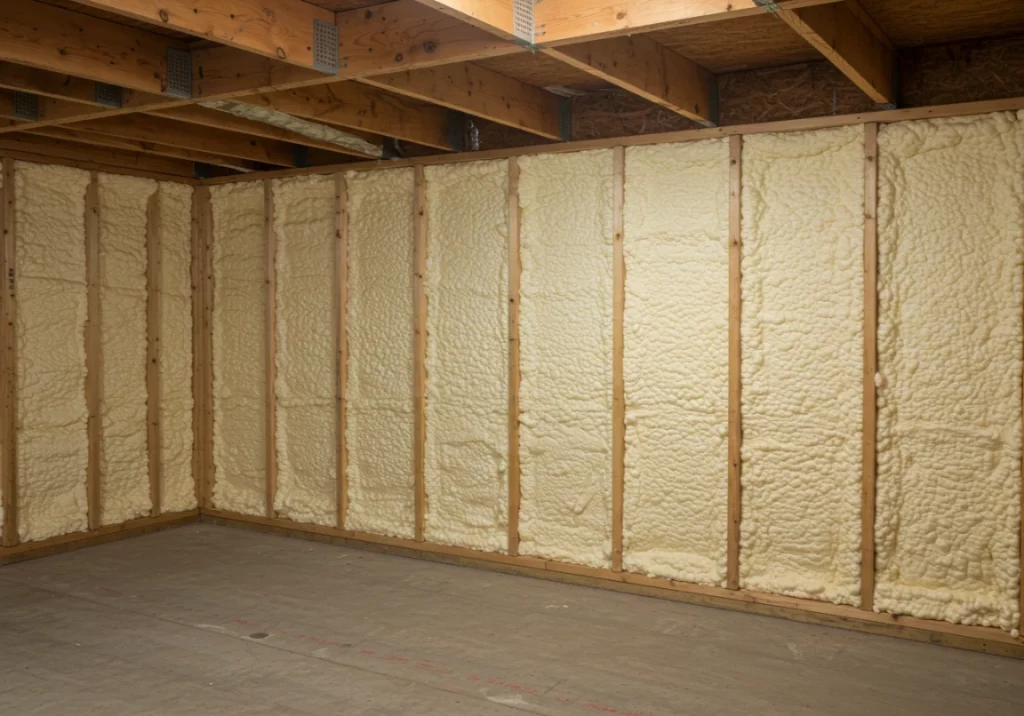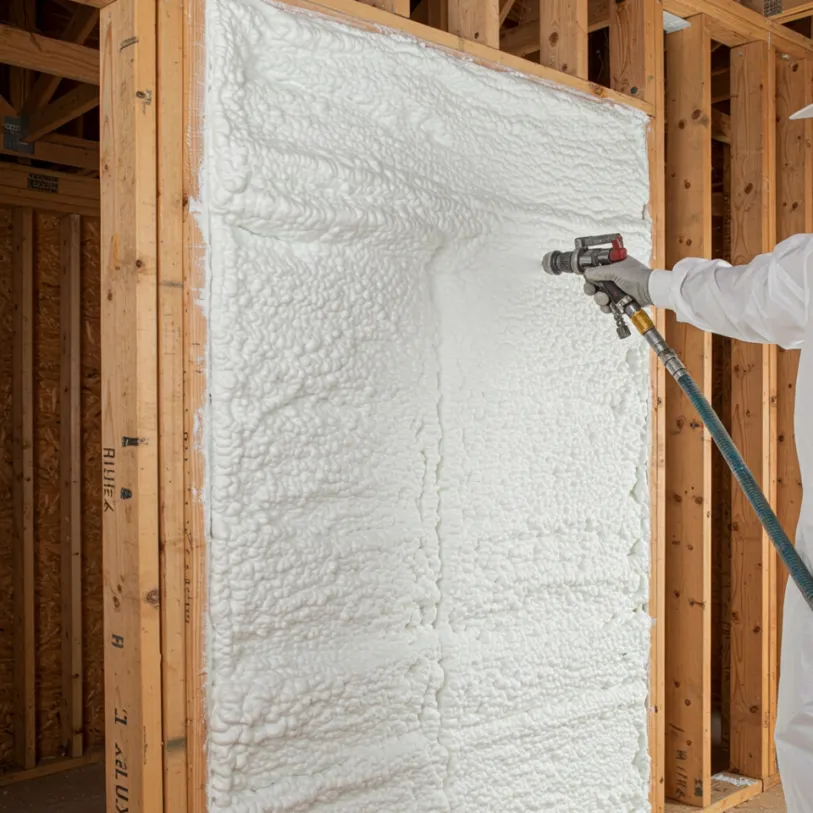

When planning a home renovation in Seattle, the focus often goes to kitchens, bathrooms, and floor plans. Insulation, however, is a foundational element that dictates the home’s long-term comfort, air quality, and energy costs. For renovations that involve opening up walls, attics, or crawl spaces, spray polyurethane foam (SPF) insulation offers a superior solution perfectly suited to the Pacific Northwest climate. It functions as more than just insulation; it’s also an effective air and moisture barrier, directly addressing the region’s damp conditions and protecting the home’s structure.
This guide explores the key details of using spray foam insulation in Seattle renovation projects. The information is based on years of hands-on experience insulating homes throughout the area, from historic bungalows to modern builds. You’ll learn about the different types of spray foam, where it works best in a remodel, and what to consider before you commit to an installer.
Seattle’s climate presents unique challenges for homes. The persistent moisture and moderate, damp winters can lead to issues like mold, mildew, and wood rot if a home isn’t properly sealed. Many older homes in the area were built with insulation materials that are now outdated and inefficient, leaving them drafty and expensive to heat.
Spray foam insulation addresses these problems directly. Unlike traditional insulation like fiberglass batts or cellulose, which can sag, settle, or absorb moisture, spray foam creates a continuous, rigid barrier. When professionally applied, it expands to fill every crack and crevice, creating an exceptional air seal. According to the U.S. Department of Energy, this air sealing is critical for energy efficiency, as drafts can waste 5% to 30% of a home’s energy use. For a Seattle renovation, this means a warmer, drier home with significantly lower utility bills.
Not all spray foam is the same. The two primary types are open-cell and closed-cell, and each has specific applications where it performs best. Understanding the difference is key to a successful project.
Here’s a direct comparison of their properties:
| Feature | Open-Cell Spray Foam | Closed-Cell Spray Foam |
|---|---|---|
| R-Value per Inch | ~3.5 | ~6.0 – 7.0 |
| Density | Low (~0.5 lbs/ft³) | High (~2.0 lbs/ft³) |
| Vapor Permeability | Permeable | Impermeable |
| Structural Strength | No | Yes, adds rigidity |
| Sound Dampening | Excellent | Good |
| Common Application | Interior walls, attics | Crawl spaces, basements, exterior walls |
Bonus Tip: In a Seattle crawl space, closed-cell foam is the go-to choice. Applying it to the underside of the subfloor and the foundation walls isolates the house from ground moisture, preventing the damp, musty smell that is common in older homes here.

During a “down-to-the-studs” renovation, you have the perfect opportunity to upgrade a home’s building envelope. Here are the most effective places to apply spray foam for maximum impact:
Spraying foam directly onto the underside of the roof deck creates a conditioned (or unvented) attic. This brings your HVAC system and ductwork inside the insulated part of your home, making them operate far more efficiently. It also stops “ice damming” in its tracks, which can happen even in Seattle’s milder winters.
When exterior walls are open, spray foam provides a complete seal that traditional insulation can’t match. It conforms perfectly around wiring, plumbing, and outlets, eliminating the small gaps that lead to drafts and energy loss.
This is where spray foam truly shines in the Pacific Northwest. Applying closed-cell foam to the foundation walls and rim joists prevents moisture from seeping in from the ground. It helps turn a damp, useless space into a dry, usable part of the home while improving the air quality of the entire house.
Before you decide on spray foam, think about these factors:
Bonus Tip: Ask potential installers what type of blowing agent is in their foam. Modern foams use HFO (hydrofluoroolefin) blowing agents, which have a much lower global warming potential (GWP) than the older HFC agents. It’s a more environmentally responsible choice.
When renovating a home in Seattle, choosing the right insulation is a decision that pays off for decades. Spray foam offers an all-in-one solution for thermal performance, air sealing, and moisture management that is hard to beat in this climate. By understanding the types, applications, and installation requirements, you can make an informed choice that will make your renovated home healthier, more comfortable, and more energy-efficient.
Making these smart, informed decisions is the key to a successful renovation. To get expert advice tailored to your home’s specific needs, contact the professionals at Cascadia Spray Foam of Seattle for a complete evaluation. You can reach the team by phone at (425) 386-3500 or by email at [email protected] to ensure your home renovation is built to last.
The R-value depends on the type. Open-cell foam offers about R-3.5 per inch of thickness, while closed-cell foam provides a much higher R-6.0 to R-7.0 per inch. For a standard 2×6 wall, closed-cell foam can achieve an R-value over R-21.
Yes. Once spray foam has fully cured, it is inert and stable. Professional installers follow strict safety protocols during application, including ventilating the area and using personal protective equipment. Occupants typically need to vacate the premises for 24 to 48 hours to allow for complete curing and off-gassing.
Closed-cell spray foam is an excellent moisture barrier. In fact, a technical bulletin from the Federal Emergency Management Agency (FEMA) lists it as a suitable insulation for flood-resistant construction because it does not absorb water and can be easily cleaned. This makes it an ideal choice for below-grade applications like basements and crawl spaces in damp climates.
Spray foam insulation does not sag, shrink, or settle over time. When installed correctly, it should last for the life of the building, providing consistent thermal performance without needing replacement.


